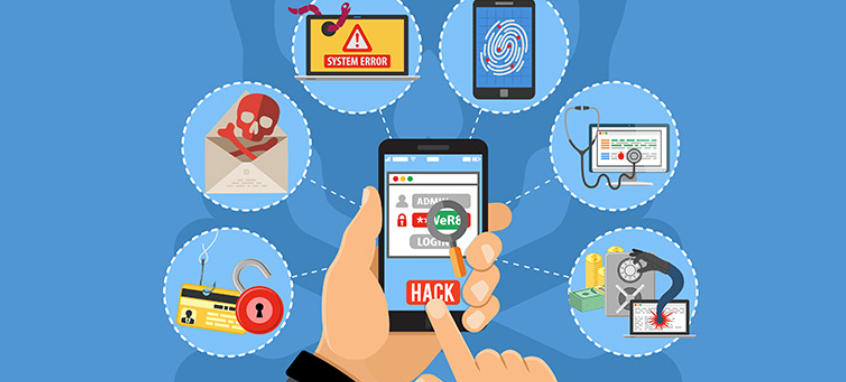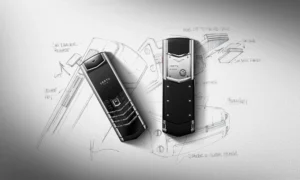In 2025, the security of your communications is no longer just a challenge for the IT department. As technology evolves, your phone system—a vital lifeline for your business and personal connections—is becoming a prime target for cyberattacks. This guide provides a clear, structured overview of the threats you face and the essential steps you must take to fortify your defenses.
Part 1: Understanding Phone Systems & Their Security Basics in 2025
The first step to securing your communications is understanding the landscape. In 2025, businesses and individuals are faced with a more diverse range of communication options than ever before, each with its own unique security challenges and advantages.
What Are Your Phone System Options in 2025?
Today’s choices go far beyond the traditional desk phone. The main options include:
-
Traditional Landlines (PSTN): The original phone system that transmits voice over physical copper wires.
-
VoIP (Voice over Internet Protocol): A technology that converts your voice into a digital signal and sends it over the internet, offering greater flexibility and cost savings.
-
Cloud Phone Systems: A cloud-based VoIP solution hosted and managed entirely by a third-party provider, offering maximum scalability and ease of use.
What Are the Core Security Principles for Any Phone System?
Regardless of the system you choose, these foundational security principles are non-negotiable for protecting your communications in 2025:
-
Data Encryption: Ensures voice data is unreadable if intercepted during transmission or while stored.
-
Authentication: Verifies the identity of users and devices to prevent unauthorized access. Multi-Factor Authentication (MFA) is a critical component here.
-
Access Control: Restricts user access to system functions based on the principle of least privilege, meaning users only have the permissions necessary to do their jobs.
-
Vulnerability Management: Involves regularly scanning for and patching system weaknesses to prevent attackers from exploiting known flaws.
-
Incident Response: Establishes a clear, actionable plan to detect, respond to, and recover from security incidents swiftly.
Traditional Landlines vs. VoIP vs. Cloud: A 2025 Security Comparison
This table breaks down the primary security features and challenges of different phone systems in 2025.
| Feature / System | Traditional Landline (PSTN) | On-Premise VoIP | Cloud Phone System (SaaS) |
| Primary Threats | Physical wiretapping, line disruption | Cyberattacks (DDoS, SIP Flooding), malware | Data breaches, service outages, misconfigurations |
| Security Control | Relies on physical security and carrier protection | Managed by an in-house IT team (firewalls, encryption) | Depends on provider's security measures, SLA guarantees |
| Encryption | Typically unencrypted (analog signal) | Configurable with SRTP/TLS encryption | Strong encryption is usually built-in, but provider-dependent |
| Maintenance | Low initial cost, high maintenance | High initial investment, requires IT team for updates | Low initial cost, subscription model, provider handles updates |
| Mobile Scenarios | Not applicable | Requires a secure VPN connection | Mobile apps often have built-in security, but public Wi-Fi is a risk |
Part 2: Unpacking VoIP Security: Common Threats You Face in 2025
As VoIP becomes the standard, the threats against it have grown more sophisticated. Understanding these vulnerabilities is critical, whether you're in a busy office or using a mobile app on your commute.
What Are the Top VoIP Vulnerabilities in 2025?
The most common weaknesses in VoIP systems today include:
-
SIP Flooding: A type of Denial-of-Service (DDoS) attack where a flood of fake requests overwhelms the SIP server, causing service disruptions.
-
Man-in-the-Middle (MitM) Attacks: An attacker secretly intercepts and potentially alters the communications between two parties.
-
Malware and Viruses: Malicious software designed to infect VoIP devices or servers to steal data or disrupt the system.
-
Unauthorized Access: Gaining entry to the system through weak passwords, default credentials, or improper security configurations.
How Can You Spot and Prevent Common VoIP Threats?
Scenario 1: The Corporate Office
In an office environment, an employee might receive a phishing email disguised as a message from IT, tricking them into clicking a malicious link or revealing their VoIP login credentials.
-
How to Spot: Be suspicious of emails from unknown sources or with unusual requests. Always verify the sender's email address.
-
How to Prevent: Implement a strong password policy, enable Multi-Factor Authentication (MFA), and conduct regular security awareness training for all employees.
Scenario 2: The Mobile User on Public Wi-Fi
When you use public Wi-Fi at a café or airport for a VoIP call, your conversation is at risk. Attackers on the same network can easily eavesdrop on unencrypted traffic.
-
How to Spot: Poor call quality, strange noises, or frequent disconnects on a public network could be a sign of eavesdropping.
-
How to Prevent: Avoid making sensitive VoIP calls on unsecured public Wi-Fi. If you must, always use a VPN (Virtual Private Network) to encrypt all your internet traffic. Using cellular data is a safer alternative.
What Are Toll Fraud and Call Spoofing?
Two of the most costly VoIP threats are Toll Fraud and Call Spoofing.
-
Toll Fraud: This occurs when attackers gain unauthorized access to your VoIP system and use it to make a high volume of expensive international or premium-rate calls, leaving you with a massive bill. To prevent this, restrict international calling permissions, set call duration limits, and regularly monitor call logs for unusual activity.
-
Call Spoofing: This is when an attacker fakes the caller ID to impersonate a trusted entity like a bank, government agency, or even a colleague. The goal is often phishing or fraud. To prevent this, educate staff to be wary of suspicious calls and deploy call verification technologies like STIR/SHAKEN.
Part 3: Beyond Threats: Essential VoIP Encryption & Protection
In the face of sophisticated cyber threats, encryption is the cornerstone of protecting your VoIP communications. It acts as a digital shield, scrambling your voice data into an unreadable code that is useless to anyone who intercepts it.
What Are the Key Encryption Protocols for Secure VoIP?
The following protocols are essential for securing VoIP traffic in 2025:
-
SRTP (Secure Real-time Transport Protocol): This encrypts the actual voice and video media streams, providing confidentiality, message authentication, and replay protection.
-
TLS (Transport Layer Security): This encrypts the signaling traffic (the data used to set up, manage, and tear down calls), ensuring the session setup process is private and secure.
-
IPsec (Internet Protocol Security): A suite of protocols used to secure communications at the network layer, often used in VPNs to provide a secure tunnel for all traffic.
What is End-to-End Encryption (E2EE) and Why is it Important?
End-to-End Encryption (E2EE) is the gold standard for privacy. It ensures that only the sender and the intended recipient can read the message or hear the conversation. Not even the service provider can decrypt the data on their servers. For businesses and individuals handling sensitive information—such as legal discussions, financial data, or healthcare details—choosing a VoIP service that offers true E2EE is essential for maximizing privacy and security.
Part 4: Fortifying Your System: Internal Security Best Practices
Even with the most secure provider, your internal practices are just as critical to building an impenetrable defense.
How Can You Implement Robust User Access Security?
Controlling who can access your phone system and what they can do is fundamental.
-
Enforce Strong Passwords: Require complex passwords with a mix of uppercase and lowercase letters, numbers, and symbols, with a minimum length of 12 characters.
-
Change Passwords Regularly: Mandate password changes at least every 90 days.
-
Apply the Principle of Least Privilege: Grant users only the minimum permissions they need to perform their jobs.
-
Disable Default Credentials: Immediately change the default username and password on all new hardware and software.
-
Monitor System Logs: Continuously monitor login attempts and system activity to detect and investigate anomalies quickly.
Why is Keeping Your Phone System Updated Crucial?
Software vulnerabilities are one of the most common entry points for attackers. It is vital to keep all components of your phone system—including firmware on desk phones, softphone applications, and server software—patched and up to date. Enable automatic updates whenever possible and subscribe to vendor security bulletins to respond quickly to critical vulnerabilities.
How Can Employee Awareness Strengthen Security?
Your employees are your most valuable security asset and your first line of defense. Regular training is essential to educate them about the risks of phishing emails, social engineering, and internal threats. Conduct simulated phishing drills to test their awareness and create clear, easy-to-understand policies for handling sensitive information and using company devices.
Part 5: Frequently Asked Questions (FAQ)
Q: Is VoIP really more secure than a traditional landline in 2025?
A: A properly configured VoIP system can be significantly more secure than a traditional landline. While landlines are vulnerable to physical tapping, VoIP faces network-level threats. However, VoIP offers advanced security controls like SRTP/TLS encryption, MFA, and access controls that landlines lack. An unsecured VoIP system is very risky, but a well-protected one offers superior data protection.
Q: How often should I review my VoIP security plan?
A: You should conduct a comprehensive review of your VoIP security plan at least once a year. For businesses in high-risk industries or those handling sensitive data, a quarterly or semi-annual review is recommended. Reviews should also be triggered by major system upgrades, changes in business processes, or the emergence of new threats.
Q: Does public Wi-Fi make my VoIP calls vulnerable?
A: Yes, absolutely. Public Wi-Fi networks are often unencrypted, allowing attackers to easily intercept your VoIP calls. Always use a trusted VPN to encrypt your connection when using public Wi-Fi. Alternatively, use your cellular data, which is generally more secure.
Q: How do I know if a VoIP provider is secure enough?
A: Look for providers with recognized security certifications like ISO 27001 and SOC 2. Evaluate their security features, including support for SRTP/TLS encryption, MFA, and Intrusion Detection Systems (IDS/IPS). Ask about their data center security, disaster recovery plans, and read the security guarantees in their Service Level Agreement (SLA).
Conclusion: Secure Your Communications Lifeline Today
In 2025, your phone system is an integral part of your security posture. From choosing a secure VoIP provider and implementing strong encryption to fostering a culture of security awareness among your staff, every step is critical. Take action now to assess and strengthen your phone system security, ensuring your communications lifeline remains unbreakable in an increasingly complex digital world.









